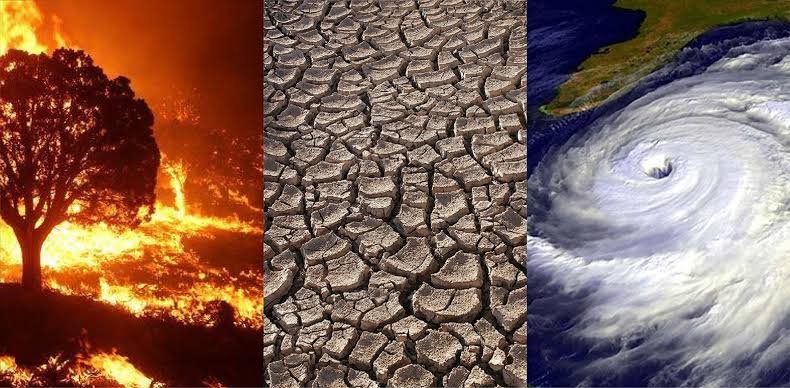Kashmir at the Crossroads: The Mental Toll of Climate Change

Gowhar Bhat
In Kashmir, things are changing, but it’s not obvious at first. The mountains, once steady, now seem to shift in the distance, uncertain of where they stand. The weather’s become erratic. The seasons, once dependable, are unpredictable. People in Srinagar, and the villages beyond, aren’t talking about prosperity anymore. They’re talking about what’s slipping through their fingers.
Kashmir was always known for its beauty—the snow-capped peaks, the green meadows, the rivers that ran clear and fast. Now, these things are a cause of anxiety. The rain doesn’t fall like it used to. The rivers, once reliable for farming, are changing. The glaciers are melting. The land that used to thrive in its rhythm now feels fragile.
I spoke with Jamal, a farmer from pulwama. He looked older than his years, his face lined with worry. “It’s different now,” he said, sounding tired. “The land’s not the same. The rains came when we needed them. Now, sometimes they come all at once. And sometimes, they don’t come at all.”
The problem’s here, but it’s not easy to pinpoint. It’s the slow unraveling of everything people once trusted. Farmers like Jamal are watching their crops wither, their way of life slipping away. Others worry about the next flood, the next drought, and whether their homes will even be here tomorrow.
But what’s not talked about enough is the toll this is taking on their mental health. Kashmir’s long history of financial crisis has already worn people down. Years of joblessness and instability have left their mark. But climate change adds a layer. It’s not just about getting through the day—it’s the worry about the future. And that constant worry is wearing people out.
I met Sakeena, a woman from Wahibugh, pulwama. Her family’s orchard used to be their pride, the trees bearing fruit year after year. Now, those trees are dying. “The seasons don’t make sense anymore,” she said, twisting her hands. “One year, we get too much rain. The next, nothing. The trees die. The fruit doesn’t grow. We’ve lived off this land for generations, but now I don’t know how long we can keep going.”
It’s not just the land. There’s a fear in the way people talk about the future. They’re not just worried about what’s happening now—they’re afraid of what’s coming. The fear is there, in their eyes, in the way they carry themselves, like they’re waiting for something they can’t quite explain, but know it’s coming.
What’s happening in Kashmir is happening elsewhere too. Climate change is pressing on people’s lives in ways that aren’t always easy to talk about. The floods, the droughts, the wild weather—that’s the obvious damage. But the long-term effects—the mental toll—are harder to see. It’s a sense of helplessness, of watching something slip away that you can’t control. Something you’ve never had to worry about before.
I spoke with some older men who’ve lived here their whole lives. They’ve seen it all. They told me that while the physical damage is obvious—floods, landslides, failed crops—there’s been little focus on how it’s affecting people’s mental health. “We’re seeing it more now,” they said. “People are anxious. Stressed. Depressed. They’re worried about their children’s futures. And for those who’ve been displaced by floods, it’s worse. It’s a kind of despair that doesn’t have an answer.”
The older men are right. Physical displacement is easy to see. The mental toll isn’t. It’s harder to measure, but it’s real. Anxiety over the climate isn’t a distant worry. It’s something people live with every day.
The younger generation feels it too. In a coffee shop in Srinagar, I spoke with a 22-year-old university student. He talked about the uncertainty clouding his future. “There’s this fear that we might not be able to live here anymore,” he said. “The city’s getting hotter. The air’s harder to breathe. It’s not the place it used to be.” His words had the same weight the older generation carries. A quiet dread that says everything, but says nothing.
There are efforts being made. Environmental groups are working to protect Kashmir’s resources, teaching people about climate change and the need for sustainable practices. But there’s still much more to do. Addressing the mental health effects of this crisis requires more attention, more funding, and more resources than are being provided right now.
Kashmir’s crisis is urgent. The land, the weather, and the people are all changing, and no one knows what’s ahead. But what’s clear is this: the mental toll of climate change can’t be ignored. People are afraid. They’re uncertain. And their anxiety is growing. It’s a quiet crisis, but it’s a crisis just the same.
As the world grapples with climate change, the people of Kashmir are bearing the weight of a mental health crisis that’s hard to talk about. It’s a crisis that needs attention—not just in terms of physical disaster, but in how it’s affecting the people, day after day.
( The author is a writer, storyteller, and educator whose work explores love, family, and life’s quiet struggles. His literary fiction, family drama, and suspense stories capture the unspoken moments and raw truths that shape us.
He can be mailed at: (gowherbhat866@gmail.com)







